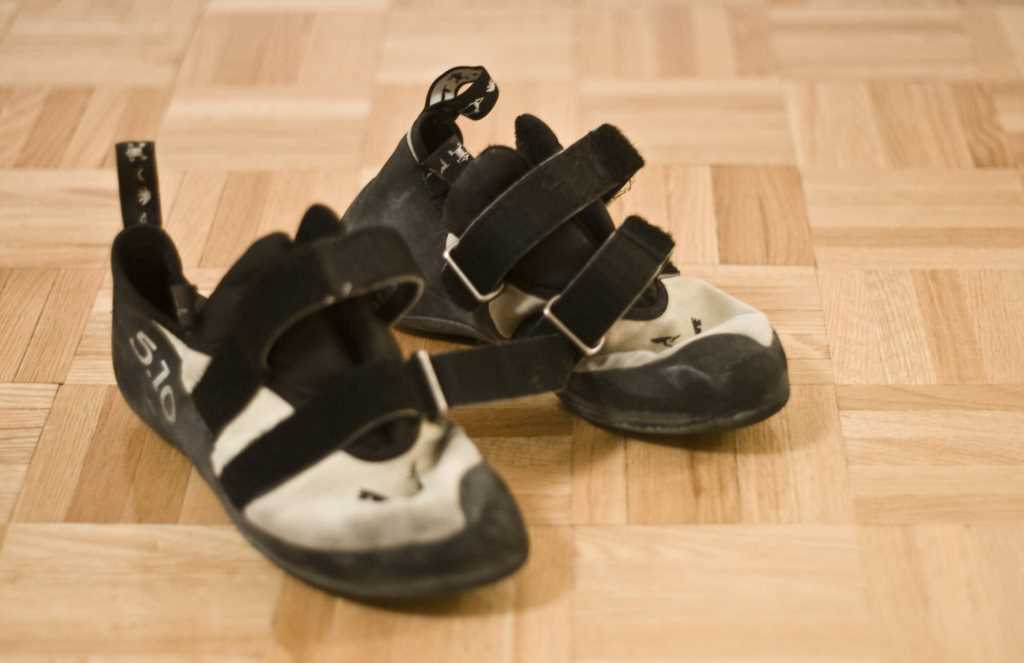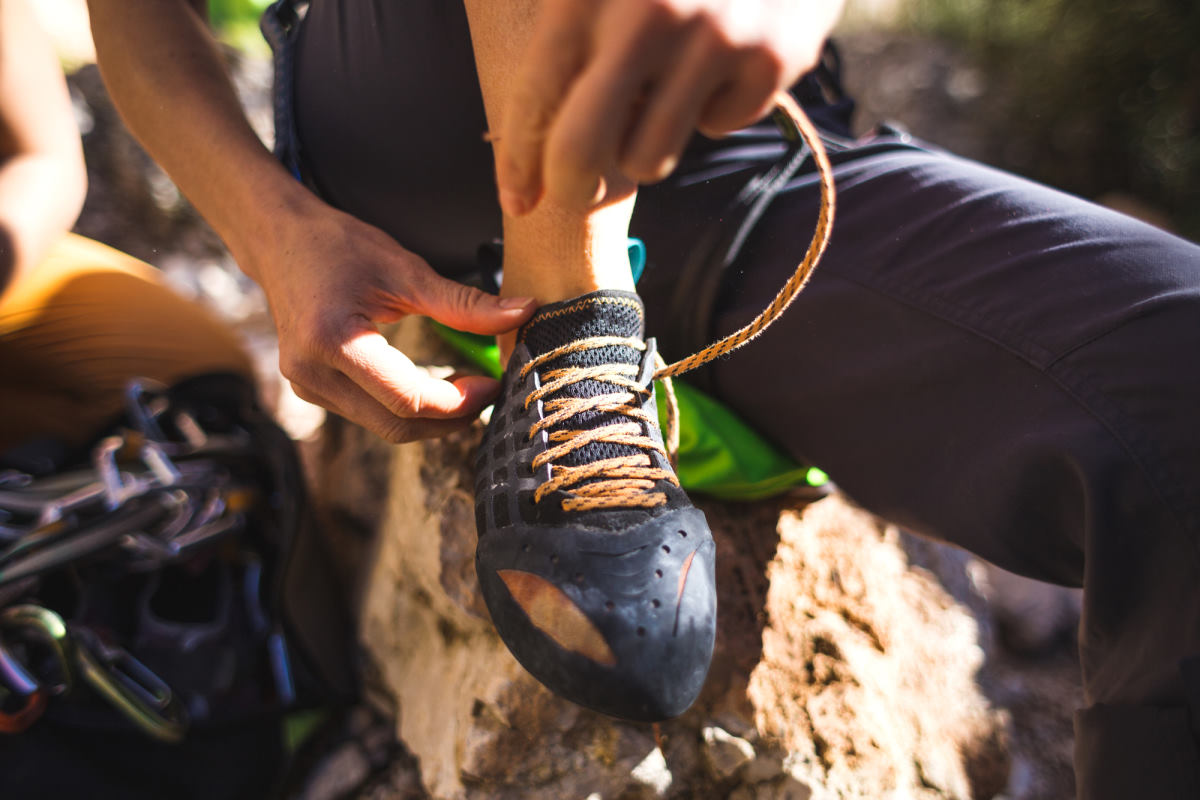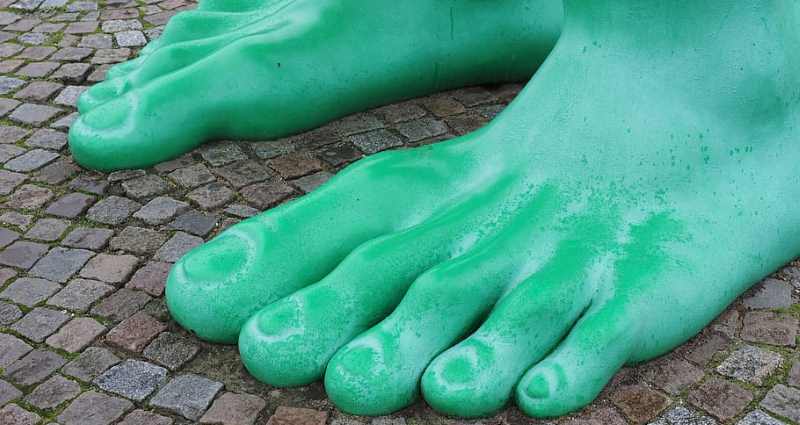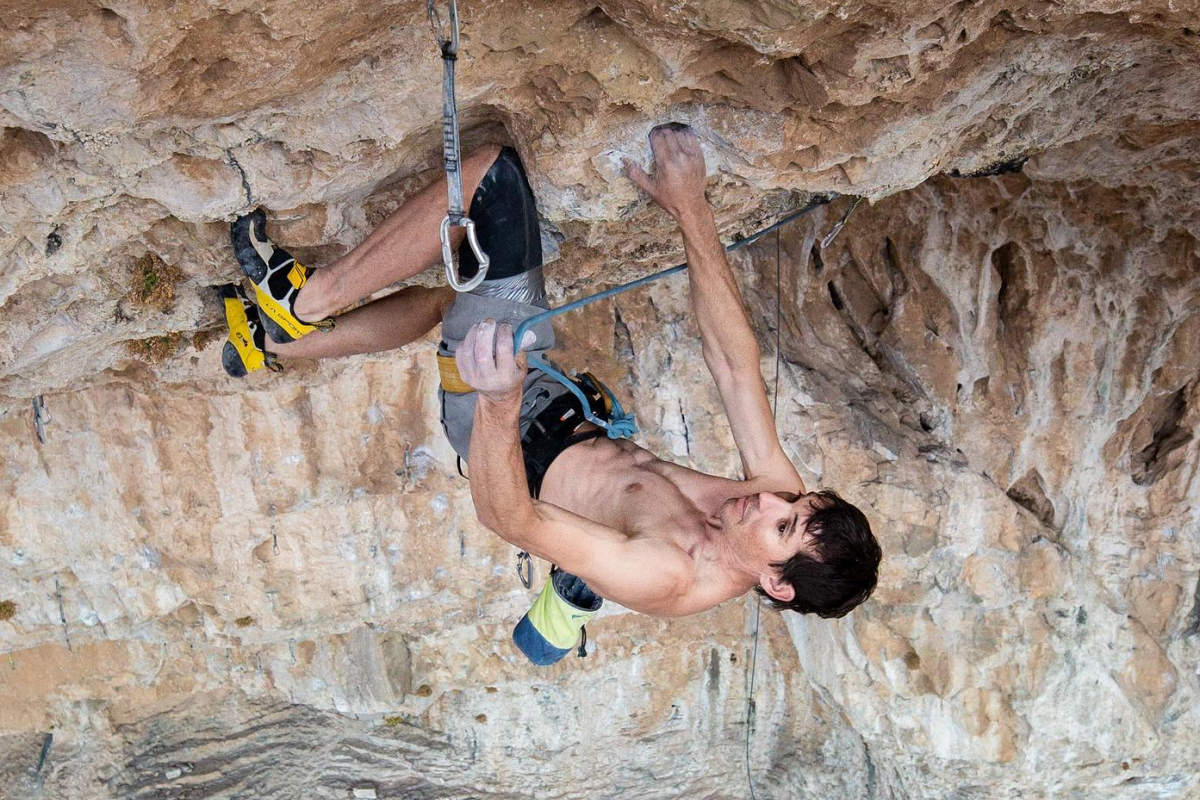Buying climbing shoes can be an expensive hobby or a once a decade affair. In theory you could wear the same pair for your entire climbing career. Let’s take a look at what affects how long climbing shoes last and what you can to extend their lifetime.
How Long Do Climbing Shoes Last?
On average – assuming you climb once or twice a week – climbing shoes should last around 3-9 months. At this point the toe box normally has enough wear to need a resole and possibly toe rand work. There are many things that affect this.
But if you get them resoled in time – they’re good to go again! If you keep getting the shoes done by a good resoler before they wear through you could possibly wear the same pair for decades. We’ve seen shoes from the 80’s still being actively used.
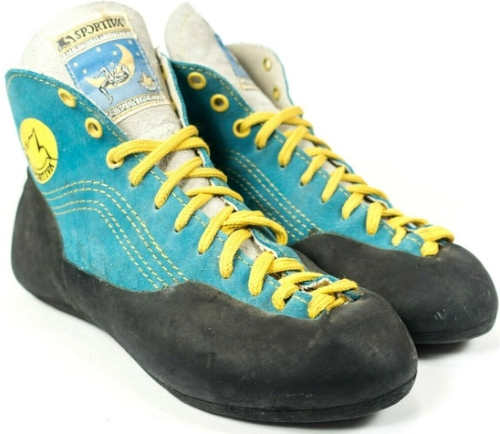
If you let them go too long they’ll probably develop a hole in the rand and start to wear through to the inner of the shoe. At this point you can still get them resoled (some resolers won’t repair shoes beyond a certain point) but it will cost more and you risk losing the shape of the shoe completely.
Realistically most shoes can take one or two resoles before needing to be replaced Rand repair takes a bit more of a toll on the shoe so is normally only done once in a shoes lifetime. The material of the shoes will also get softer with time and lose shape. Still, having a great pair of older, comfier shoes for long days of easier climbing is a common thing.
Rubber also de-laminates (un-sticks from the fabric) but this is easy to fix. Stitching does wear and especially so in poorer quality shoes. If you take good care of your shoes though, small repairs can keep them going for a long time, and bigger repairs can be carried out by the better resolers.
So really the most important question is…
When To Resole Climbing Shoes?
Read the full article to find out when to resole climbing shoes, the types of resoles available, and everything else you need to know about resoles.
How To Make Climbing Shoes Last Longer?
Footwork Failures
The more you scrape your shoe the more it will wear down due to friction. Climbing shoe rubber is really soft by design, this is the key to the grip. Here are some examples of bad footwork and tips for improving: –
- Repositioning – Plan ahead and put your toe in the right place first time. Repositioning wastes energy and rubber
- Toe + Edges Only – Really the big toe and just an inch or two around the edge should be used. Using more might feel more stable at first but moving away from the foothold will often mean repositioning.
- Tap + Slide – Tapping your foot well above a hold and scraping down against the wall is really common for beginners gym climbing. It might work now but it’s terrible practice as it just won’t be possible outside. It also kills shoes faster than anything else.
- No Peeking – Look at where you put your foot. You’d be surprised how common it is not to even look at footholds.
- Scraping Up – The most forgivable of the footwork sins. Commonly seen as bouncing the foot up the wall. It can help with balance on hard moves but most likely better body positioning makes it unnecessary.
Quality Shoes Last Longer
Simply put, well built shoes will last longer. Cheaper shoes often rely on outer rubber to keep the shape of a shoe. Complaints with cheaper shoes are that the shape deforms quickly, stitching isn’t great and in the wrong places – causing painful rubbing and hot spots.
Higher quality shoes feature precise stitching, high quality materials, and real thought put into the design overall. Climbing shoes can definitely by expensive but often the pay off is years of use.
La Sportiva, Scarpa, Tenaya, Evolv, and Unparallel all have a reputation for quality shoes though many others make great rock shoes.
Avoid Climbing Shoe Stank
No socks, strenuous exercise, long summer days, no socks. Learn the best ways to stop climbing shoes smelling so bad. Those veteran all day shoes with 7 resoles probably shouldn’t get to live in the house.
How Long Do Climbing Shoes Last On Indoor Walls?
Most indoor climbing and bouldering walls have textured walls. The paint on the walls has a fine sand or similar material in it to help with grip. This tries to replicate most types of outdoor rock where the porous texture gives you grip. Some rock is glassy and terrible for smears however, and there are plenty of gyms that use bare wood with no grip.
This texture means if you drag your feet (toes especially) up or down the wall you’ll wear down the rubber really quickly. Focus on your footwork indoors. The best indoor climbing shoes also tend to have a softer rubber like XS Grip 2 as this is better for overhangs, smearing on textured walls, and modern volume-based climbs. Being softer it will wear down faster.
Rubbers Are Important
Softer rubber like Vibram XS Grip 2 and Stealth Mi6 grip better when smearing or indoors climbing, whereas stiffer rubber like Vibram XS Edge and Trax XE tend to perform better on tiny edges and on rock like granite.
Unfortunately the softer rubbers tend to wear down quicker. There are modern rubbers designed specifically for indoor walls that retain the stick without wearing as fast. More about the best climbing shoe rubbers.
How Long Do Climbing Shoes Last On Different Types Of Rock
Different types of rubber on climbing shoes tend to work better on different types of rock. An indoor shoe with very soft rubber, used a lot on textured may only last 3 months before a resole is needed. How long climbing shoes last depends a lot on that difference.
It could take multiple resoles and last a few years. Granite like the stuff found in Yosemite tends to be smoother and all about smaller edge footholds. A harder rubber suites this better and might last quite a while.
There are much softer, porous rocks the gritstone in the North of the UK, or the sandstone found in Fontainebleau in France. These tend to rely much more on friction and smearing. Softer rubber helps this but sliding off these textured holds all day wears through rubber and skin fast.
